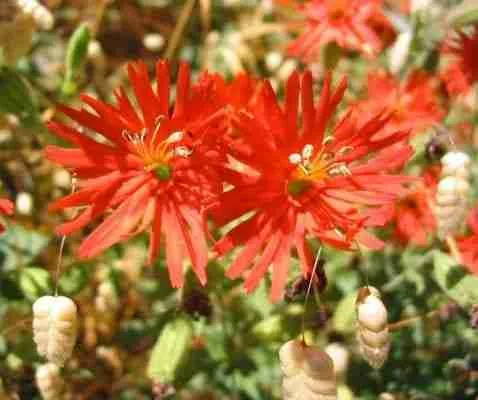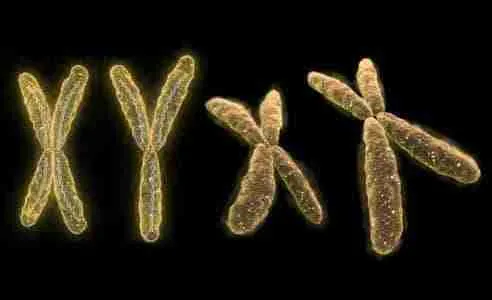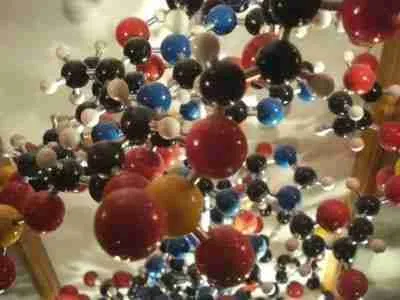Floral Morphology of Ranunculaceae and Caryophyllaceae
The Ranunculaceae family belong to the order Ranales, generally considered to be the most primitive of the angiosperm orders. In the Ranunculaceae, there are forty-eight genera, fifteen British. The species are mostly perennial herbs and flowers are commonly solitary, but cymes and racemes may be found. They are hermaphrodite but each is built on primitive plan, that is hypogynous with parts spirally or partly spirally inserted on a cone-shaped receptacle. The numbers of parts are available and often large and indefinite.

This is particularly so of the stamens and carpels of ranunculaceae. There are usually five sepals which may be petaloid when the corolla is absent. Petals are usually five but may be deformed, very small or absent. Stamens are indefinite, usually many. The gynaecium is usually apocarpous of several to many carpels. Each carpels contains one to several seeds with basal or marginal placentation. The style is simple and terminal on each carpel. Nectarines may be present on the receptacle or on the perianth segments which may be specially modified. Pollination is by insects. The fruit is a head of achenes or follicles except in those rare cases of a syncarpous ovary, when it is a capsule, e.g. Nigella.
Common wild genera include Ranunculus (buttercup), Caltha (marsh marigold), Clematis (old man’s beard), Anemone, Helleborus (hellebore) and Actaea (baneberry). Members commonly cultivated for their flowers are Delphnium (larkspur), Nigella (love-in-a-mist) and Aquilegia (columbine). None are of great economic importance but some species yield poisonous drugs such as aconitine from the monkshood.
CARYOPHYLLACEAE
Belonging to the order Centrospermae, this family is large and there are seventy genera of which thirty are represented in Great Britain. The species are herbaceous and may be annual or perennial. The inflorescence is characteristically cymose, rarely solitary. Floral characters are available, but in general the flowers of the caryophyllaceae are hermaphrodite (occasionally unisexual), regular, hypogynuos and the parts are cyclically arranged. Five sepals (occasionally four) make up the calyx and they may be free or joined at the base. The corolla is usually of five petals which are often forked to give the appearance of ten. They are free and may bear scales forming a corona at the mouth of a long tube formed by the petal bases. The androecium is composed of five or ten stamens. The carpels vary in number from two to five. They are syncarpous, forming a unilocular ovary with many campylotropous ovules on a basal or free-central placenta. There are usually two to five free simple styles. Nectarines are on the receptacle below the gynaecium. Pollination in the caryophyllaceae is normally by insects. The fruit is a capsule opening by teeth or valves and the seeds possess a perisperm (food storage tissue not derived from the embryo sac, i.e. from the nucellus or integuments).
Common wild british genera include Melandrium (campions), Lychnis (ragged robin), Cerastium (chickweeds) and Stellaria (stitchworts). Among cultivated flowers are the pinks, carnations, sweet William and Gypsophila. None of the species are of great economic importance.
Ranunculaceae (buttercups, crowfoots) are flowering plants, largely in temperate and colder regions. They are mainly herbaceous with bisexual, pentamerous flowers.
Many of the morphological characters in this family are primitive. However, some advanced traits are also found in this group. These include specialized spurred petals, syncarpy and follicles. These features are found in the core eudicots.
Characteristics of Ranunculaceae
Generally herbaceous, sometimes a tree or shrub (Ranunculus), or a liana (Clematis). Stems annual or perennial, usually simple, occasionally spiral or cymose; rarely erect. Leaves usually opposite, occasionally whorled or laminate; sometimes sheathing at base; rarely stipulate (only in Thalictrum); with reticulate venation. Flowers hermaphrodite or unisexual (only in Ranunculus) and hypogynous, with a calyx and corolla united into one structure called a perianth. The perianth is synsepalous or aposepalous, biseriate or dichlamydeous; the corolla usually zygodactylous with five petals. Petals are usually valvate or imbricate, sometimes fused to form a spur (Delphinium). Stamens often inserted at the base of the perianth, in some species inserted in between petals. Ovules solitary or in groups of three or more, in the case of Ranunculus and in a few genera such as Aconitum and Delphinium.
It has been suggested that the petaloid perianth may have evolved by a process of gradual loss of the second whorl of petals from core Caryophyllaceae, starting at the basal divergence between Rhabdodendraceae and Simmondsiaceae or earlier. However, developmental evidence and character mapping suggest that the petaloid perianth arose independently in a number of taxa, most likely as a result of a heterochronic shift. Whether this change was to the advantage of Ranunculaceae or to that of other clades is not clear. The presence of the morphologically distinctive Ranunculaceae and a large proportion of zygodactylous flowering plants in core Caryophyllales makes them an important group to study the emergence of this floral innovation. A comparison of floral morphology with those of other monocots is therefore also desirable. In this context, a recent comparative study of the floral development of three actinomorphic and two zygomorphic members of Ranunculaceae shows that zygomorphy is accompanied by a reversal of the position of the stamens within the perianth and in the position of the anthers within the stigma. This indicates a close relationship between apetalous flowers and monocots. This is a strong argument in favour of placing Ranunculaceae near the apetalous/monocot boundary in the core Caryophyllales. The zygomorphic floral traits present in Ranunculaceae, especially those of the derived tribe Delphinieae, should further clarify this issue.
Flowers of Ranunculaceae
Generally, flowers of ranunculaceae are radially symmetrical, but several genera exhibit floral bilateral symmetry (zygomorphy). In this case, the outer whorl of stamens become petals and the inner whorl of carpels becomes staminodia. In some cases, zygomorphy may have been co-opted from a pre-existing actinomorphic state, and in others it might have evolved independently. The evolutionary transition to zygomorphy is not clear-cut in core eudicots and has been associated with various gene families. Homologs of the antirrhinum majus Cycloidea gene (Cyc) control floral symmetry in various groups of core eudicots, and it is possible that Cyc homologs were also responsible for the evolution of the zygomorphic flowers in ranunculaceae.
In some genera, such as Cerastium and Gymnocarpos, the perianth is isomerous, with sepals that are elongate, bifid or curved in shape, or even absent. This morphology might be explained by heterochrony, i.e. a slowing down of the rate of development of the floral organs during ontogeny. However, heterochrony is a rather vague term and has been defined by different researchers in slightly different ways, leading to confusion.
In other genera, the perianth consists of one or two whorls of petals that are rounded to broadly elliptic or ovate, often with an abruptly enlarged base. The petaloids are usually short, equal to or up to twice the length of the sepals, and often have a recurved surface that gives them a distinctively ‘flower-like’ appearance. This type of perianth is common in basal eudicots and monocots, including the subclade of the Caryophyllaceae that arose at the base of the core eudicots, but it is not present in the other members of that group.
The phylogeny of the family is moderately well resolved based on morphological and molecular data. It is likely that the Caryophyllaceae are sister to the rest of core eudicots. Alternatively, the relationship with the rest of core Caryophyllales is less certain. Molecular phylogenies supported by other molecular evidence suggest that the family may be placed closer to other basal eudicots, or even outside core Caryophyllales.
Fruits of Ranunculaceae
The fruits of Ranunculaceae are generally follicular or achene. The follicles are often small and closed, the achene forming a single valve or two valves, a capsule or a nut. Seeds are numerous to single and perispermic (that is, they are not buried in the endosperm). The flowers and fruit of some genera are toxic to animals. Nonetheless, some are cultivated as herbaceous or ornamental plants and others are used in medicine for their alkaloids and glycosides.
Ranunculaceae are a large family of herbaceous plants, usually perennials, with some annuals and several deciduous species. They are found worldwide and are mainly in temperate regions. The flowering stems are usually erect, although the plants can also be trailing. The flowers are hermaphrodite and the petals may be either free or fused together at the base, giving the appearance of five or more petals. The calyx is typically gamosepalous or valvate, but there are some exceptions.
Caryophyllaceae is a large family, comprising about two thousand species in over six hundred genera, all but the most tropical members of which are herbaceous. The plants are primarily temperate and subtropical, with the greatest diversity in the northern hemisphere. Most species are cultivated as garden ornamentals.
In molecular phylogenetic analysis the family was found to be monophyletic, but morphological characters have prompted Stevens to reclassify it, splitting it into the monotypic subfamilies Glaucidiumideae and Thalictroideae. Glaucidium and Hydrastis have a number of distinctive morphological characteristics, which suggest that they belong to a basal group within the clade.
These morphological characters, combined with the discovery of an early fossil spore known as Leefructus and the molecular evidence that supports the relationship between Ranunculales and the other eudicots, suggest that this clade has undergone a period of rapid diversification. Consequently, it could be that tricolpate pollen appeared very early in the history of the order, possibly as early as 127-125 Ma, and that all families containing this feature have a similar ancestry.
Seeds of Caryophyllaceae
The seeds of the caryophyllaceae have a characteristic shape that allows them to float and presumably disperse by water. They have a thin pericarp and a large embryo sac, which together with the inflated exine, provide good buoyancy. The embryo sac also contains a vascular system, and thus they are able to grow. They are typically monoembryonic, but some genera have biembryonic seed types (e.g., Caryophyllum). The ovary is syncarpous and has two to five free simple styles. Stamens are inserted opposite the petals, and the gynaecium has an androecium with five or ten staminodes. There is often a basal nectary between the gynaecium and the fruit. Pollination is usually by insects. Fruits are often capsule-shaped.
Ranunculaceae are predominantly flowering plants that are adapted to cold environments and dry conditions. They have a worldwide distribution and contain over 2,000 species in 43 genera, including the world’s most widely cultivated and ornamental flower, the buttercup, Ranunculus. They show a wide range of characteristics, but they are characterised by a large number of small to medium-sized flowers with either radially or bilaterally symmetrical arrangements. The flowers are often scented and attract pollinators, and the sepals and petals may be fused into a perianth of one or more whorls that is not clearly differentiated from a calyx or corolla; they are actinomorphic and sometimes zygomorphic.
Phylogenetic studies of Ranunculaceae and their close relatives have shown that they are basal within eudicots. However, a number of characters have only moderate support for their positions in phylogenetic trees optimised to the Ranunculales-Magnoliidaceae node.
The relationships of the monocots and Ceratophyllales with the basal eudicot clade remain poorly understood, especially in regard to their relationship to Ranunculales. Recent discoveries of Potomacapnos, a stem-group Ranunculaceae dated to 120 Ma in the east U.S.A, and Leefructus, a stem group member dated to 125 Ma in China, suggests that the latter is sister to Ranunculales based on mesofossils and molecular data, although support is only moderate in some analyses.




